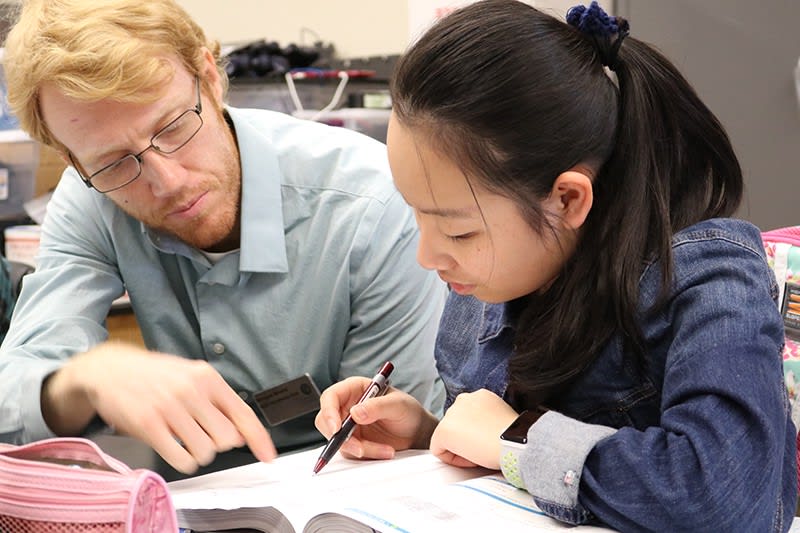By Stuart Grauer, Ed.D.
The Small Schools Coalition and The Grauer School
This paper is a review of the costs of small schools (300 or fewer students) as compared to the costs of large consolidated schools (over 700). We kept finding that, with rare exception, when researchers were showing efficacy of design features they did not cover size of student population. Small design schools were presumed to be uneconomical. After four years of studying small schools closely and developing the largest library of small schools research in the world, we now understand that small schools are no more expensive than today’s consolidated schools. Our findings show there are additional costs to large consolidated schools that small schools avoid; small schools are safer, have higher teacher retention rates, have higher parent involvement, greater academic success, and produce more active citizens. Therefore, there are many cost advantages to small schools that are of interest to educational stakeholders, including students, teachers, families, administrators, policy makers, and tax payers. This paper concludes with a recommendation to bolster the research done on the costs of the small school model, and a call to overhaul the one-dimensional criteria with which school costs are currently evaluated.
The Cost of Education
“The ‘cost savings’ of larger schools are only apparent if the results are ignored.” — The New Rules Project
When we first set out to study school size, it had nothing do with the cost of education. But it does now.
At first, we just wanted to give teachers and parents basic data on what was so meaningful about school design sizes. We kept finding that, with a rare exception, when researchers were showing efficacy of design features they did not cover size of student population. Small design schools were presumed to be uneconomical, despite our research showing that small schools are safer, more connected, and higher performing (Grauer).
Now, after four years of studying small schools closely and developing the largest library of small schools research in the world, we understand that small schools, defined by the Small Schools Coalition as schools with fewer than 400 students, are no more expensive than today’s consolidated schools (Grauer). It is harder to even imagine a grosser misconception about school design. As schools struggle to save money, and as the public continues to invest in consolidated schools with false hopes of savings, billions of dollars are being wasted for reasons that are almost completely unfounded and ignored.
The United States public school system has the 5th most expensive cost of education in the world. Despite the ample fiscal investment, students lag behind academically taking 26th place in math in the global arena (Ryan 2013). In contrast, where schools of 300 students or less were considered, we would find that American schools reside at the top of any international ranking (Grauer). But, can we afford the cost of education where small school size is concerned? It’s time for our archaic presumption of economy of scale to be explored.
Increased Costs of Mainstream Education in Large Schools
Mainstream education consists primarily of large schools with institutional structure and bureaucratic hierarchies. If large schools were cheaper to operate in the long run, we might of course have a rationale for their overwhelming prevalence (3 out of 4 suburban public high school students attend a high school with 1,000 students or more) — but there is great uncertainty in knowing if they really cost less (Balfanz 2009).
Research is scattered, but our own literature reviews indicate that mainstream education via larger schools with enrollments in excess of 1,200 have not produced expected economies of scale that create better results for less money, except possibly when compared with some medium sized schools (between 400 and 900 students) — and not when compared to true small schools (less than 300). The following review employs judgment from the field, immersion in the literature, and a holistic approach to arrive at its conclusions. These conclusions do not replace the value of a quantitative, cost-effectiveness methodology or obviate the need for such research so much as they compel it.
The current comprehensive school model was famously advocated for in 1916 by Ellwood Cubberley of Harvard, who held that large schools were preferable for three reasons, all taken from models of factory efficiency: “first, they reduced the ratio of administrators to teachers, thus cutting costs; second, they provided more adequately specialized instruction; third, they took advantage of large facilities to reduce overall expenditures.” As we will see, each of these reasons is unfounded (Hylden 2005).
Research has shown that formulas for determining funding disguise tremendous non-cash costs associated closely with large schools; some of those costs are difficult to affix a price tag to, and some of them include terrible social costs. Large school increased costs include:
- Increased drop out rates
- Increased violence
- Decreased sense of social safety and connectedness
- Lower teacher satisfaction and higher teacher turnover
- Lower achievement in college
- Less happiness (Lawrence et al. 2002)
At present, the above costs are seldom considered to be actuarial realities. I mention the last, happiness, not as a luxury item, and only because so much research ties it closely to our nation’s overall productivity; even if, in large schools currently representing mainstream education, happiness is not a curricular concern (Conley 2007; Achor 2012).
Safe School Environment

Part of the problem of measuring school costs is that the most essential element, namely safety, is almost impossible to assign a dollar amount to.
Facilitating a safe school environment in small versus large schools has been illustrated in various types of incidents including robbery, vandalism, possession of weapons, verbal abuse of teachers, use of illegal drugs and alcohol, and disorder in classrooms (Nathan and Thao 2001).
Violence is routine in mainstream education on America’s medium- and large-sized campuses. For instance, 56 percent of girls and 40 percent of boys reported being harassed over the preceding school year in a 2011 survey (Anderson 2011).
Comparing small schools (less than 300) with big schools (1,000 or more), research reveals that big schools have:
- 270 percent more vandalism
- 378 percent more theft and larceny
- 394 percent more physical fights
- 825 percent more violent crime
- 1,000 percent more weapons incidents
- 3,200 percent more robberies (Lawrence et al. 1999)
The 174-page report following the Columbine, Colorado shooting disaster acknowledges that “the task of coping with school rage” is difficult at large schools, where students “tend to feel marginalized and less a part of a school community.” The commission concluded “it is difficult for administrators in large schools to create a supportive atmosphere for students” (Hill 2001). Comparatively speaking, safety issues and risks do not substantially present themselves on small campuses (Wasley et al. 2000). It is impossible to dismiss school size as a powerful indicator of a safe school environment for America’s children, and unconscionable to disregard the “costs” of this loss of safety, however difficult it is to quantify.
Increased security expenditures are a bi-product of the manufactured lack of a safe school environment created by large consolidated schools. There is a significant correlation between security spending and both district locale type (urban, suburban or rural) and district size (i.e. enrollment). Across Texas districts, locale type and size account for roughly one-third of the variation in security spending. Controlling for locale, a smaller percentage of operating expenditure is allocated to security in town and rural districts compared to urban districts.
Similarly, larger districts devote a greater percentage of their operating budgets to security than smaller districts (DeAngelis et al. 2011). The bottom line is that metal detectors, on campus police, large-school security measures, and gang prevention, are all costs that small schools avoid; and yet, still maintain a safe school environment large schools with these measures in place are not facilitating for students.
Graduation Rate Statistics
Graduation rate statistics are similar to school safety because their costs are difficult to affix. However, according to the Alliance for Excellent Education’s issue brief, “The High Cost of High School Dropouts: What the Nation Pays for Inadequate High Schools,” if the high school students who dropped out of the class of 2011 had graduated, the nation’s economy would likely have benefitted from nearly $154 billion in additional income over the course of their lifetimes (Alliance for Excellent Education 2011). Over a lifetime, a high school dropout will earn $200,000 less than a high school graduate and almost $1 million less than a college graduate (Johnston 2011). Yet, little research on graduation rate statistics exists on the relationship between school size and dropout rate.
Researchers at New York University’s Institute for Education and Social Policy examined 128 high schools using school-by-school budget information for 1995–96. They found that schools with fewer than 600 students spent $7,628 per student annually, $1,410 more than schools with more than 2,000 students spent. The cost per graduate, however, at the small schools was $49,553, slightly lower than the per-graduate cost of $49,578 at larger schools. This is because dropout rates at the small schools were much lower — 64 percent of small-school students graduated in four years compared with 51–56 percent of the students in large schools with 1,200–2,000 or more students. (Stiefel et al. 1998)
Similarly, MDRC recently produced a comprehensive report on New York City small high schools of choice (SSCs), which have 100 students or less per grade. The findings show that the cost per graduate was 14–16 percent lower at the small schools as compared to their large counterparts. Again, this is due to the fact that the overall graduation rate is higher at the SSC’s, and therefore fewer students need to attend a financially burdensome fifth year of high school (MDRC 2014).
In remarkable accounting, Henry M. Levin of Columbia University and Cecilia E. Rouse of Princeton University penciled this out: when the costs of investment to produce a new graduate are taken into account, there is a return of $1.45 to $3.55 for every dollar of investment, depending upon the educational intervention strategy. Under this estimate, each new graduate confers a net benefit to taxpayers of about $127,000 over the graduate’s lifetime. This is a benefit to the public of nearly $90 billion for each year of success in reducing the number of high school dropouts by 700,000 — or something close to $1 trillion after 11 years (Levin and Rouse 2012). These graduation rate statistics indicate small schools are a sound investment for the greater community, in addition to the students they directly serve.
Educational Quality
School size has a largely ignored impact on educational quality, including measures such as social adjustment, parental involvement, and academic achievement. Dollars & Sense summarizes research on the educational quality and social benefits of small schools and the negative effects of large schools on students, teachers, and members of the community. Dollars & Sense found smaller schools provide benefits of improved teacher and student attitudes, improved student self-perception, student academic achievement equal to or superior to that of students at larger schools, and increased parental involvement. Smaller schools can also provide educational quality without increasing administrative and construction costs (Lawrence et al. 2002).
Teacher Retention Rates and Quality

Small schools facilitate higher teacher satisfaction and retention rates
Another quality factor is teacher retention rates. The percentage of teachers who say they are very or fairly likely to leave the profession has increased by 12 percent since 2009, from 17 percent to 29 percent (Wasley et al. 2000).
The National Commission on Teaching and America’s Future proffers starker numbers, estimating that one-third of all new teachers leave after three years, and 46 percent are gone within five years.
In an Educational Evaluation and Policy Analysis article, Susan Burkhauser (Loyola Marymount University, RAND) reports that 16 percent of U.S. public school teachers leave their schools each year.
While there are times when a teacher’s departure is a net plus for the school, high teacher retention rates have a negative effect. Replacing a teacher costs between $4,400 and $17,900). The reasons teachers leave the profession or switch within the profession (so called “churning rate”) are complex, and go beyond the scope of this report.
However, data reveals that teacher satisfaction in schools with high parent engagement are more than twice as high as those in schools with low parent engagement to say they are very satisfied with their job (57 percent vs. 25 percent). And parent engagement is much higher in small schools; 85 percent of parents regularly attended parent teacher conferences in small schools (under 300) compared to a 58 percent attendance rate in schools of 1,000 students or more (Noel et al 2012, 17).
Teacher retention rates at small schools indicate teachers stay longer and do not leave the profession as often as their counterparts at large schools (Wasley et al 2000). Given yet another staggering school cost our nation faces, teacher training, it is wasteful and sad to overlook data on teacher retention rates. But indeed, it is largely overlooked, and the emerging teacher shortage will have costs far beyond the individual school and district.
Educational Infrastructure Costs: Buildings
Our team could find only one peer-reviewed research study of educational infrastructure costs via school construction in professional educational literature (Azari-Rad et al 2002). Size of school in this study measured by total square feet vs. planned enrollment and came up with the following findings:
- Doubling square feet of the project increases costs by 91 percent
- Two-school vs. one-school option increases construction costs by 4.7 percent
- “Very large school” projects increase costs from 8 to 12 percent
Another relevant source that weighs in on educational infrastructure costs is the study by Craig B. Howley of Ohio University, which questions the view that economies of scale necessitate the construction of larger schools. Howley found that smaller schools are less expensive than larger schools per square foot, but they cost the same per student as larger students. Howley also found:
- Smaller schools allocate 26 percent more space to each student
- 9–12 schools of 138–600 students were no more expensive per student to build than 601–999 students
- 9–12 schools of 138–600 students were less costly per square foot ($96 vs. $110)
Howley’s conclusion: do not expect operating-cost savings from consolidation. Lack of scholarly interest in these questions is alarming in view of the large sums spent on educational infrastructure, and the political battles often waged when new schools are built.
External School Costs

Small schools build community bonds absent bureaucratic boundaries
As school bureaucracies expand, the number of external bureaucracies that support them seems to grow. Currently the federal education bureaucracy costs in excess of $1000 per student nationwide, or $71.2 billion per year (Office of Management and Budget 2014, 85).
The percentage of employees actually doing direct teaching has been decreasing over the past 40 years as schools have grown and consolidated. About 50 percent of employees in primary and secondary education actually teach; as overall school costs have risen, more money is being spent on those that have no direct contact with students (Richmond 2014).
In addition to lower school costs, small schools are more likely to benefit the community-at-large by producing active, fruitful citizens. The New Rules Project (Mitchell 2011) has summed up, as follows: “If we consider the goal of schools to be improving the lives of students, enabling them to be better citizens, and earning higher incomes (therefore paying higher taxes) then smaller schools are actually much more cost effective than larger schools. All of that is before you even begin to factor in such things as “sense of community” or physical safety…” (Wilson 2013).
Small schools create meaningful connections with the communities they serve. Small school students are likely to affiliate not only with their school, but also with their town. The importance of community service and local leadership becomes personal. “People recognize that the school is the heartbeat of the community,” says Robert Mahaffey. “Residents want to invest so that their schools are strong and well-supported. This results in civic and scholarship opportunities for students.” (Wilson 2013).
Graduation Rate Statistics
Small schools compete favorably in the marketplace when given a chance. In virtually no other market is such a powerful statement of patronage made: 11 percent of the country pays for an expensive service for their children that they could get for free. There is only a 1 percent margin when comparing tuition and fees of small schools (under 300) and large schools (over 700) schools; $24,790 per pupil and $23,799 per pupil, respectively (NAIS). It is easy to surmise that, if small private schools were free, that 11 percent could turn into 50 percent quickly, threatening the existence of the large consolidation school. American actual and hidden public high school costs are approaching the point where this could be possible.
Advocates of national testing standards for teachers and students believe they are putting these players on an internationally competitive playing field. They may cite competition in test scores and varsity teams as examples of their competitive nature. Unfortunately, this promotes a narrow band of competition, an arena that is just as fenced in as today’s large high school complex. If we wanted schools to compete in things that will most directly lead us towards a happier, more productive country, let schools of all sizes compete with one another on three-dimensional data:
- Student safety (physical and emotional, real and perceived)
- Teacher, student and parent ratings of trust and liking for the school
- Student and teacher feelings of belongingness and morale in the organization
- College admissions and completion rates
- Student and teacher happiness
Though discussed routinely in news columns, few such measures have made their way into public funding schemes. Small schools and most private schools compete and survive all of the above critical measures of enduring quality and success. As confirmed in a report generated by the High School Survey of Student Engagement, small schools (of 300 students or less) exceeded medium and large schools (of 500 students or more) in the level of comfort students feel at their school, and in students’ abilities to build meaningful relationships with a diverse group of individuals (HSSSE 2014). If we are after a strong country of free individuals and entrepreneurship, let us replace the current student testing and data in every school with values that matter to the school community.
While it is possible to dispute beliefs on school size, the fact is, there is no significant body of research on the relationship between the cost of education and size of schools. Mergers and consolidations not just inside school districts, but also in businesses across America continue to leave us with complex organizations too big to lead except by imposed regulations and controls, rather than the development of trust-based relationships. Given the 100-plus year steady trend in school expansion, the unknown human and economic costs of the dearth of research could be staggering. Districts, states and federal educational agencies should contribute to a consolidated database on the cost of education and benefits of school sizes. If you would like to learn more about the many cost benefits of small school, or to become a member of the Small Schools Coalition totally free-of-charge, we welcome you to contact us directly.
References
Achor, Shawn. 2012. “Positive intelligence: Three ways individuals can cultivate their own sense of well-being and set themselves up to succeed.” Harvard Business Review 90, 100–102.
Alliance for Excellent Education. 2011. “The High Cost of High School Dropouts: What the Nation Pays for Inadequate High Schools.” Accessed September 16, 2014. https://all4ed.org/wp-content/uploads/2013/06/HighCost.pdf
Anderson, Jenny. 2011.. “National study finds widespread sexual harassment of students in grades 7 to 12.” The New York Times, November 7. Accessed September 12, 2014. http://www.nytimes.com/2011/11/07/education/widespread-sexual-harassment-in-grades-7-to-12-found-in-study.html
Balfanz, Robert. 2009. “Can the American High School Become an Avenue of Advancement for All?” America’s High Schools 19 (1).
Burkhauser, Susan. July, 2015. “Hello, Goodbye: Three Perspectives on Public School District Staff Turnover.” https://www.rand.org/pubs/rgs_dissertations/RGSD357.html
Conley, Chip. 2007. Peak: How Great Companies Get Their Mojo from Maslow. San Francisco: Jossey-Bass.
DeAngelis, Karen J., Brian O Brent, and Danielle Ianni. 2011 “The Hidden Cost of School Security”Journal of Education Finance 36 (3): 312–37.
DiMauro, Zoey. 2014. “Study: Half of all School Employees Not Teachers, Increase 130% Since 1970.” Cnsnews.com.http://www.cnsnews.com/news/article/zoey-dimauro/study-half-all-school-employees-not-teachers-130-increase-1970#.VDCbXnEy6Cg.email
Grauer, Stuart and Christian Ryan. “Small Schools: The Myths, Reality, and Potential of Small Schools” Community Works Journal. Accessed September 16, 2014. http://www.communityworksinstitute.org/cwjonline/essays/a_essaystext/grauer_smallschools2.html
Azari-Rad,Hamid, Peter Philips, and Mark J. Prus. 2003. “State Prevailing Wage Laws and School Construction Costs.” Industrial Relations 42 (3): 445–457. doi: 10.1111/1468–232X.00299.
HSSSE. 2014. “Grauer vs. School Size Report.”
Hill, David. 2001. “Breaking up is hard to do.” Education Week, 36.
Howley, Craig B. 2005. “Don’t Supersize Me: The Relationship of Planned Construction Cost to Planned School Enrollment in the U.S.” Presented at the Annual Meeting of the International Society for Educational Planning. Bologna, Italy, October.
Hylden, Jordan. 2004. “What’s So Big About Small Schools? The Case for Small Schools: Nationwide and in North Dakota.” Initially prepared for PEPG
Director Paul Peterson’s Fall 2004 Seminar course at Harvard University. Accessed September 16, 2014.
Lawrence, Barbara, Kent, Steven Bingler, Barbara M. Diamond, Bobbie Hill, Jeffrey L. Hoffman, Craig B. Howley, Stacy Mitchell, David Rudolph, and Elliot Washor. 2002. “Dollars & Sense: The Cost Effectiveness of Small Schools.” Cincinnati: Knowledge Works Foundation.
Levin, Henry M., and Cecelia E. Rouse. 2012. “The True Cost of High School Dropouts.” The New York Times. January 25.
Johnston, Cindy. 2011. “Series Overview: The Cost Of Dropping Out. ” NPR. July, 24. Accessed September 16, 2014. http://www.npr.org/2011/07/24/138508517/series-overview-the-cost-of-dropping-out
Office of Management and Budget. 2013. “Fiscal Year 2014 Budget of the US Government.” Washington, DC: U.S Government Printing Office. Accessed September 18, 2014. http://www.whitehouse.gov/sites/default/files/omb/budget/fy2014/assets/budget.pdf
MDRC. 2014. “Frequently Asked Questions About MDRC’s Study of Small Public High Schools in New York City.” Accessed October 28, 2014. http://www.mdrc.org/news/announcement/frequently-asked-questions-about-mdrc-s-study-small-public-high-schools-new-york
Mitchell, Stacy. 2000. “Jack and the Giant School.” The New Rules 2: 1–10.
NAIS. 2014. “Per Student Expenditure of Large vs. Small Schools.” http://www.nais.org/Pages/default.aspx
Nathan, Joe, and Sheena Thao. 2001. “Smaller, Safer, Saner Successful Schools.” Minneapolis: Center for School Change, Hubert H. Humphrey Institute of Public Affairs.
Noel, Amber, Patrick Stark, and Jeremy Redford. 2013. “Parent and Family Involvement in Education, From the National Household Education Surveys Program of 2012.” National Center for Education Statistics, Institute of Education Sciences, U.S. Department of Education. Washington, DC. Accessed September 16, 2014. http://nces.ed.gov/pubsearch
Richmond, Matthew. 2014. “The Hidden Half: School Employees Who Don’t Teach.” Thomas B. Fordham Institute. August 12.
Ryan, Julia. 2013. “American Schools vs. the World: Expensive, Unequal, Bad at Math.” The Atlantic. December 3.
Stiefel, Leanna, Patricia Iatarola, Norm Fruchter, and Robert Bernie. 1998. “The Effects of Size of Student Body on School Costs and Performance in New York City High Schools.” New York: New York University Institute for Education and Social Policy.
Wasley, Patricia A., Michelle Fine, Matt Gladden, Nicole E. Holland, Sherry P. King, Esther Mosak, and Linda Powell. 2000. “Small Schools: Great strides. A Study of New Small Schools in Chicago.” New York: Bank Street College Of Education.
Wilson, Kathleen. 2013. “Little But Lucky: Administrators Highlight the Many Benefits of Small Schools — Including Leadership Opportunities.” Leadership for Student Activities Magazine. Accessed September 17, 2014.


Recent Comments